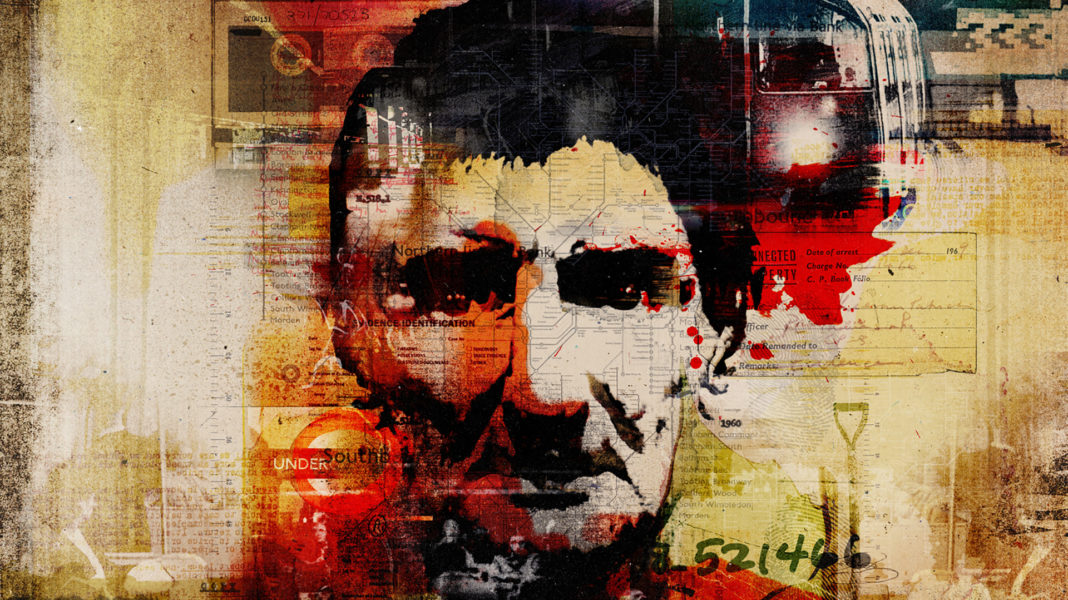Do we really care who lives or dies in the Nobody Zone?
If you’re self-isolating, socially distancing, or off work thanks to the coronavirus, Donal O’Keeffe recommends you listen to RTÉ’s gripping podcast series The Nobody Zone, which looks at the life of the man who was – possibly – Ireland’s most prolific serial killer.
Who did you murder, are you a spy?
I’m just fond of a drink helps me laugh, helps me cry
So I just drink red biddy for a permanent high
I laugh a lot less and I’ll cry till I die
All ye young people now take my advice
Before crossing the ocean you’d better think twice
Cause you can’t live without love, without love alone
The proof is round London in the nobody zone
Missing You is the theme song for The Nobody Zone, a collaboration between RTÉ Radio 1’s Documentary on One and Denmark’s Third Ear Productions, while a line from Jimmy McCarthy’s haunting song, popularised by Christy Moore, gives the series its name. Red biddy – a horrible-sounding concoction of red wine and methylated spirits – was a favourite drink of the homeless men who populated the Nobody Zone of the series’ principal setting – London of the early 1980s.
The podcast series begins with a prologue set on the platform of the Baker Street underground station late on the night of June 2, 1953 – the day Queen Elizabeth II was crowned. As the series’ narrator and writer, Tim Hinman sets the scene, you hear the clatter and clank and feel the hot breath of the last train as it comes screaming into the filthy station, about to become the murder weapon in the first killing by Ireland’s most prolific serial killer, if that is indeed what it was, or if that is indeed what he was.
On the platform, two Irish men argue, and the smaller man suddenly becomes violently angry, pushing the other man into the path of the oncoming train.
Thirty years later, on an unseasonably cold August day, two homeless Irish alcoholics are arrested for mugging a pensioner on Clapham Common. In desperate need of a drink, they had attacked and robbed a pensioner named Walter Bell, stealing his watch and wedding ring.
One of the homeless men is Paul MacManus, and in a depressingly honest moment, Hinman tells us we can forget that name right away, ‘like so many of the people he met in his lifetime probably did too’.
“Paul MacManus was a nobody then, and he remained a nobody. Nobody, as far as I know, ever found out what happened to him after this story is over.”
It’s a telling phrase, and one which holds the key to the central mystery of the story, because the simple, horrible truth is that some lives matter a lot less than others.
The other man’s name though, is one you will remember, because Kieran Patrick Kelly, ‘Nosey’ Kelly or ‘Mad Ken’ to those who know him, has an apparently credible claim on the title of Ireland’s most prolific serial killer.
MacManus and Kelly have been sleeping rough for weeks and haven’t washed in a very long time. The Desk Sergeant in Clapham Police Station makes the entirely practical decision to throw MacManus and Kelly in a cell which is already occupied by another homeless man, a man named Boyd.
Boyd is sleeping off the session which got him arrested for being drunk and disorderly, and is snoring like a drain. Boyd is, in the words of then Detective Inspector Ian Brown, ‘a smelly old tramp’ and the Sergeant knows from bitter experience that the cell will need to be thoroughly cleaned after Boyd is discharged. Since MacManus and Kelly are similarly filthy, it makes perfect sense to bang them up in the same cell, to avoid another cell being contaminated. The reasoning is flawless, if somewhat heartless, and it will have fateful and fatal consequences.
D.I. Brown is ready to head home when the alarm goes up, and he runs to the cell, where he finds the Desk Sergeant attempting to give Boyd the kiss of life, but Boyd is dead, strangled with a tied-together pair of socks. MacManus is panicked, and banging on the cell door, demanding to be let out. In the corner, utterly calm, is Kelly, sitting cross-legged and sockless.
As Brown puts it, blackly: “Using my detective powers, I worked out that the socks around Boyd’s neck were most probably Kelly’s, and there we have Kelly committing a murder.”
It soon becomes apparent that Kelly had murdered Boyd for snoring too loudly. Horrible as this is, it should surely be for Brown the most open-and-shut case of all time. It was what would follow though, that would make this case so memorable.
While questioning Kelly, Brown saw from police records that Kelly had previously been acquitted of the 1977 murder of a homeless man called Ed Toal in Kennington. On a whim, and thinking Kelly might now confess to Toal’s killing, Brown asked: “Now tell me about all the other murders, then, Kelly”.
Kelly responded “You’re talking about Fisher, aren’t you?”
The police questioned Kelly for weeks, and, as Brown puts it: “In the end, Kelly put his hands up to 13, 14, 15 murders.”
The second and third episodes centre on retired policeman Geoff Platt’s sensationalist book The London Underground Serial Killer, and the book is probably the reason anyone is talking about Kieran Kelly at all. Platt’s book caused a media storm when it was published in 2015. Platt suggests that Kelly murdered at least twice as many people as he had confessed to killing, and the killings were covered up to prevent a mass panic.
Platt had worked as a young police officer during Kelly’s time in Clapham Police Station. Platt says Kieran Kelly told him he had murdered around 31 people, random Londoners he pushed in front of Tube trains. Platt says the Home Office pressured the Metropolitan Police into dropping the case.
Platt’s claims led to the Met’s reopening of the case. It remains open.
Irish Journalist Rob Mulhern tracks down Platt – after considerably more difficulty than you’d expect for a man with a book to flog – and the meeting goes quickly awry. I won’t spoil it for you.
Kieran Kelly is a ghost who haunts The Nobody Zone, and the documentary attempts to find Kelly, and the truth about his claims. Who was Kieran Patrick Kelly? Who was Christy Smith, the man Kelly says was his first victim, that 1953 night in Baker Street Station, and why is there no record of him? How many people did Kelly really kill? Is a lifelong alcoholic, homeless for 30 years, a credible witness?
If Kelly was telling the truth, he killed three times as many people as Jack the Ripper did. If so, why have we never heard of him?
Is the bitter truth that the media and the public only took notice, not so much when Geoff Platt’s sensational claims doubled Kelly’s supposed murder tally, but rather when Platt suggested that Kelly hadn’t just preyed on faceless nobodies like himself, but had also murdered ‘somebodies’ like us?
Do we really care who lives or dies in the Nobody Zone?
It’s a fine series, and the sixth and final episode landed yesterday, so if you’re self-isolating, socially distancing, or like so many of us – out of work thanks to the pandemic that has changed all of our lives, you could do a lot worse than give The Nobody Zone a listen.
If you’re hard of hearing or deaf, the series is subtitled on YouTube, with the first episode here.
The Nobody Zone is available on the RTÉ website, or wherever you get your podcasts.








